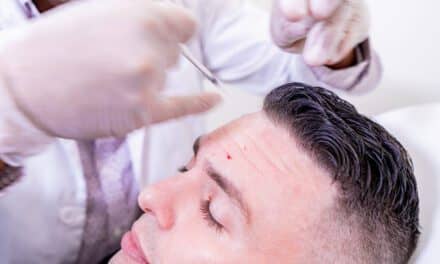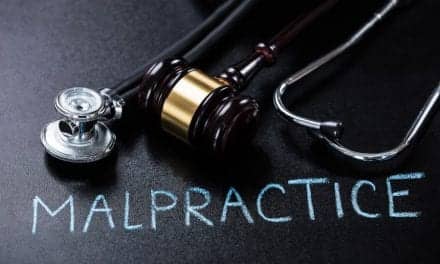PSP reports on a tightly run plastic surgery nonprofit organization

For example, the probability that a child in a developing country will suffer a disabling fire-related burn is 1 in 200; for a child in an industrialized country, it is 1 in 2,000. Each week, seven women in Bangladesh suffer a traumatic burn. The number of plastic surgeons in Sri Lanka is six; in Zambia, one; and in Bangladesh, 15.1
The number of people in many third-world countries who need care far outstrips the ability of those in the country to provide care. As Mrani Alaoui Nidal, MD, of Morocco illustrates, “Currently, we have approximately 100 children in need of plastic surgery at the two primary hospitals in Rabat. Yet, not one surgeon on staff is trained in plastic surgery.
“The surgeons here are trained in orthopedic and pediatric surgery. We have over 21 surgeons who are willing to receive training, but have had no access to training to date, except one doctor who is being trained in the United States.”
This physician is a pediatric surgeon in Ibn-Sina Hospital, the teaching hospital in Rabat, the capital of Morocco, that serves the northern half of the country. According to the hospital’s Web site, its staff performs 80 to 100 interventions per month that are primarily burn and aesthetic repair cases resulting from traumatic injury.2
Larry S. Nichter, MD, MS, FACS, of Huntington Beach, Calif, the president and founder of the Plasticos Foundation—an American nonprofit organization—has his own insight into the access-to-care issue. “Some countries may have no or only one surgical training program. In fact, they may only train one surgeon per year in the entire country,” he says.
A Closer Look
Let’s explore the work of the Plasticos Foundation, which is dedicated to training surgeons and treating children in needy countries. Denise Cucurny, the foundation’s director of trip development, refers to a Chinese proverb when describing the organization’s mission: “Give me a fish and I eat for a day. Teach me to fish and I eat for a lifetime.”
Yet Plasticos’ work goes beyond training surgeons and treating patients. The foundation’s success is based on the core group of surgeons, anesthesiologists, pediatricians, nurses, assistants, and volunteers who have come together to provide support services; and the surgeons that they train worldwide.
Nichter explains, “The doctors and nurses we train are bright. They have competent psychomotor skills and anatomical knowledge, but are technique-starved. After we leave, these health care professionals are able to train other surgeons and support people in reconstructive surgery. In turn, the amount of leveraged care is enormous and ultimately serves tens of thousands worldwide.”
|
The organization’s size and typical funding generation currently provide for three trips per year. During each trip, the participants usually interact with the majority of the medical staff at the hospital visited, and they treat 55 to 115 children. The group combines the expertise of approximately four plastic surgeons, four anesthesiologists, one pediatrician, and a staff of support nurses and translators, for a total of 16 travelers.
Each team member is assigned two suitcases that contain necessary medical supplies. All personal items are limited to a carry-on or one fourth of a suitcase.
Team-member support does not end there. The foundation requires the involvement of many volunteers to complete each mission.
Nurses from United States-based hospitals volunteer to itemize and pack each suitcase with the medical equipment, including portable anesthesia machines and monitoring equipment. Other types of equipment that is itemized and packed includes: blood-pressure cuffs, sutures, medical instruments, drapes, surgical gloves, and drugs ranging from antibiotics to baby aspirin.
|
Larry S. Nichter, MD, MS, FACS, was able to straighten Homero’s arm and save his fingers. Homero will have the use of his arm and hand after he recovers from this surgery. —LR |
|
Communications Vital
Communication with the host country is also important. A prior site visit by Plasticos is required to ensure that the key elements for success are present. These include, but are not limited to: an invitation by the host country, medical personnel to train, adequate prescreening and housing of patients, follow-up by local surgeons, and the ability to carry out follow-up correspondence.
Volunteer coordinators and translators play a pivotal role in making certain that the information is translated accurately. Volunteer nurses in the host country must also be available to help in postoperative care of patients. In the end, the small core group of Plasticos members coordinates the efforts of probably more than 100 persons to complete a single mission.
The team members also evaluate the current level of expertise of the physicians who receive training and the types of surgeries that have been performed in the hospital in previous years. Finally, the foundation members must evaluate the weather, especially when they go to places like the Amazon, Cuba, and Guatemala, where they went this past year.
As Jaafar Benkirane, chairperson for the State of California National Business Advisory Council, comments, “I was recently introduced to Plasticos Foundation to present a plea for their assistance in Morocco. The information they provided about the investigation that they propose to do in order to evaluate candidacy for their program demonstrates a clear commitment to helping children in need and knowing every detail necessary to complete the mission efficiently.”
Plasticos is quick-witted and resourceful. As William J. McClure, MD, of Napa, Calif—a recent mission participant—relates, “I’ve participated in over 40 missions for different organizations. I really like Plasticos because they are lean and mean.”
The Dollars
The beauty of Plasticos is in its efficiency. The foundation operates with less than 3% overhead—so literally 97% of the funding goes to medical supplies and patient care.
The staff of volunteers from numerous Southern California hospitals, under the direction of Rachel Russell, RN, head of materials management for Plasticos, reduce costs that are associated with endless hours of support needed for preparation. But each mission still costs $30,000 to $40,000, and cash is still the primary area of concern.
In the end, nonprofit organizations such as the Plasticos Foundation need people to improve the quality of life for others. To accomplish their missions, people need to volunteer and help fund their services. They need the support of policy makers. Without the public’s involvement, nonprofit organizations cannot get the job done.
Perhaps your belated New Year’s resolution can be to donate money to nonprofits such as Plasticos. The reward for good will can be far greater than the cash donated. One trip on the Plasticos calendar this year is Cuba. Funding is still needed to complete two other missions for the year. Please consider direct or indirect means to help fund these trips.
Lesley Ranft is a contributing writer for Plastic Surgery Products. For additional information, please contact [email protected]
References
1. Interplast. Interplast in the developing world. 2004/2005 annual report. Available at: [removed]http://interplast.org/files/2005_Annual_Report.pdf[/removed] Accessed January 8, 2007.
2. Kingdom of Morocco Ministry of Health. Ibn-Sina Hospital [in French]. Available at: www.ibnsina.ma/services_medico_tech/chirurgie_plastique.htm Accessed January 8, 2007.

 Homero’s Story
Homero’s Story 


